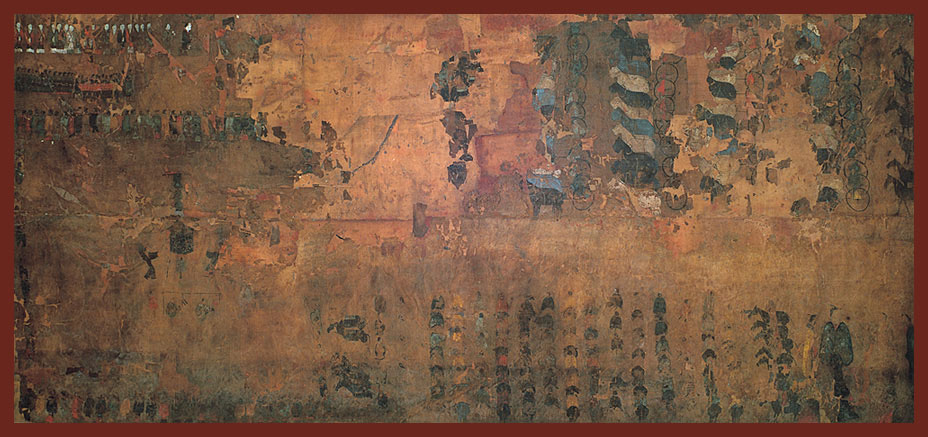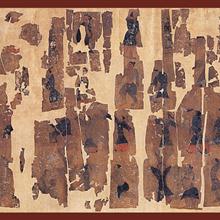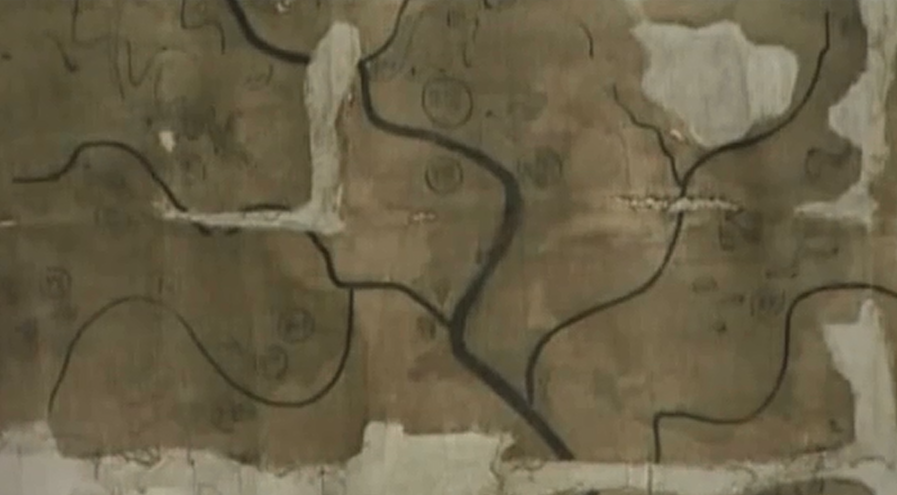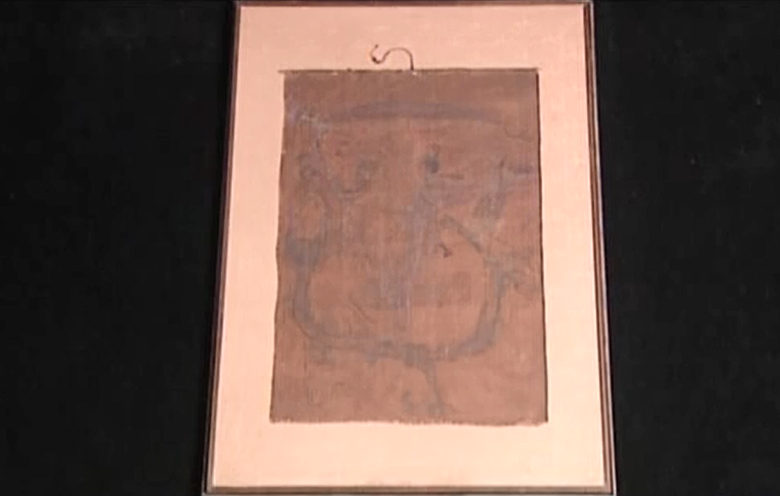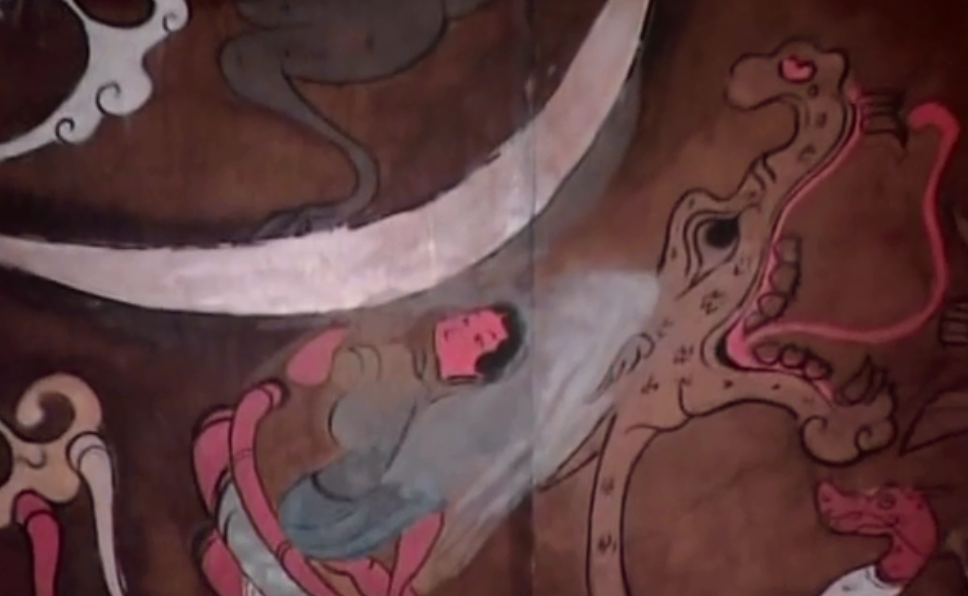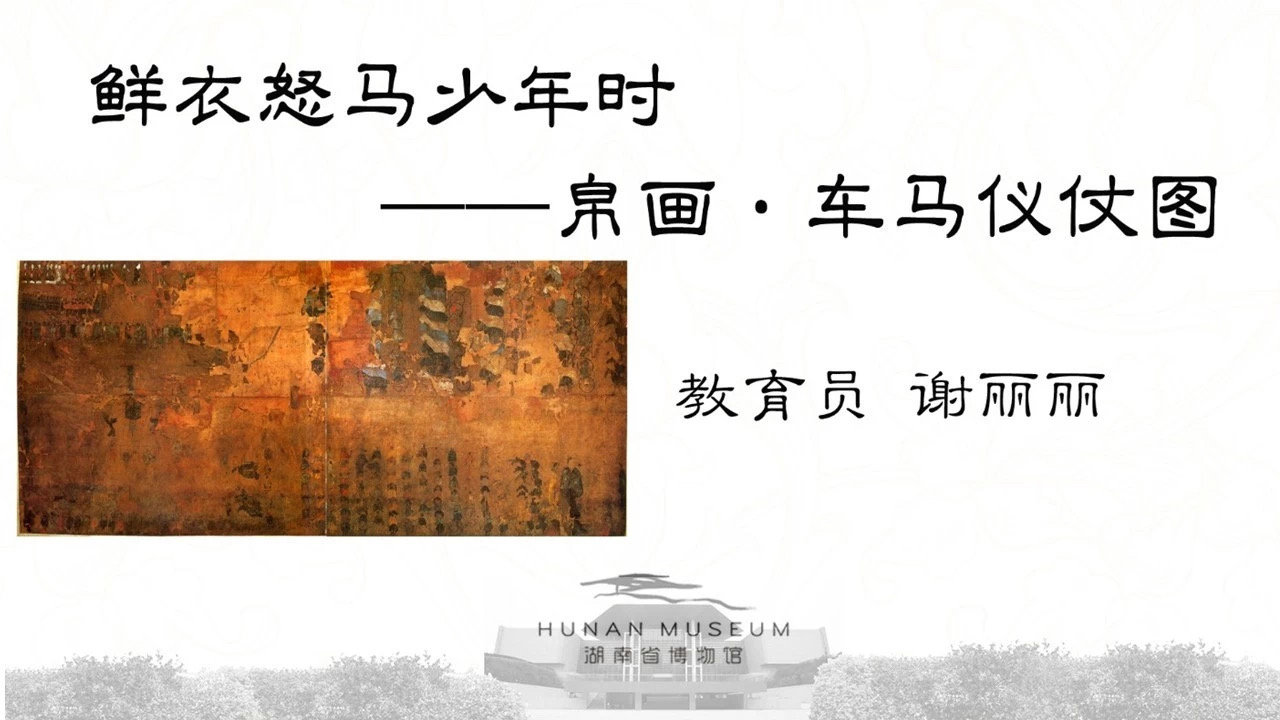Dimensions: Length: 212cm; width: 94cm
Origin:Unearthed from Han Tomb 3 at Mawangdui, Changsha in 1973
The painting was hung on the western wall of the coffin chamber when it was unearthed. Horizontal in lay-out, its content of chariots, horses and people can be divided into four parts. There are two rows of personages in the upper left corner of the drawing and in the front of the upper row is painted a tall and robust man. This man is wearing a hat in the style of the Liu family with its ribbon tied under his chin, and a purple long robe with vermillion collar and white sleeves. He also has a long sword attached to his waist. His right hand is holding the sword hilt while his left hand a black stick. As his body shape, attire and expression are all similar to those of the occupant of the tomb as depicted in the T-shaped silk drawing, he is very likely the occupant of the tomb. Under his feet is a high terrace of nine steps. He is walking forward from the left side of the terrace. The two rows of people behind him all carry dagger-axes and shields and face to the occupant of the tomb, apparently his guards of honor.
Almost all the people depicted in this silk drawing depicts are military footmen, chariots and horses, and the person’s entourage. If we connect this with the Map of Topography, Map of Garrisons and more than thirty weapons unearthed from the same tomb, we can infer that the occupant was an important military general in his lifetime. In the year 196 B.C., Founding Emperor Liu Bang of the Han Dynasty “dispatched Lu Jia to set up Zhao Tuo as King of the State of Southern Yue” and this resulted in an armistice between the two sides. When Empress Lu was in power, however, “the embargo of iron products into the State of Yue” led to continued war. When Emperor Wendi came to power, he dispatched Lu Jia to pacify the State of Southern Yue, and Zhao Tuo, the King of Southern Yue, expressed his “willingness to always remain a vassal”. But the Han court did not feel at ease and still put massive forces stationed to guard against invasions of the State of Southern Yue. It can thus be inferred that the occupant of the tomb was very likely an important military general stationed in the southern border State of Changsha. What this silk drawing depicts is the grand scene of his inspection of his subordinates during his lifetime.
